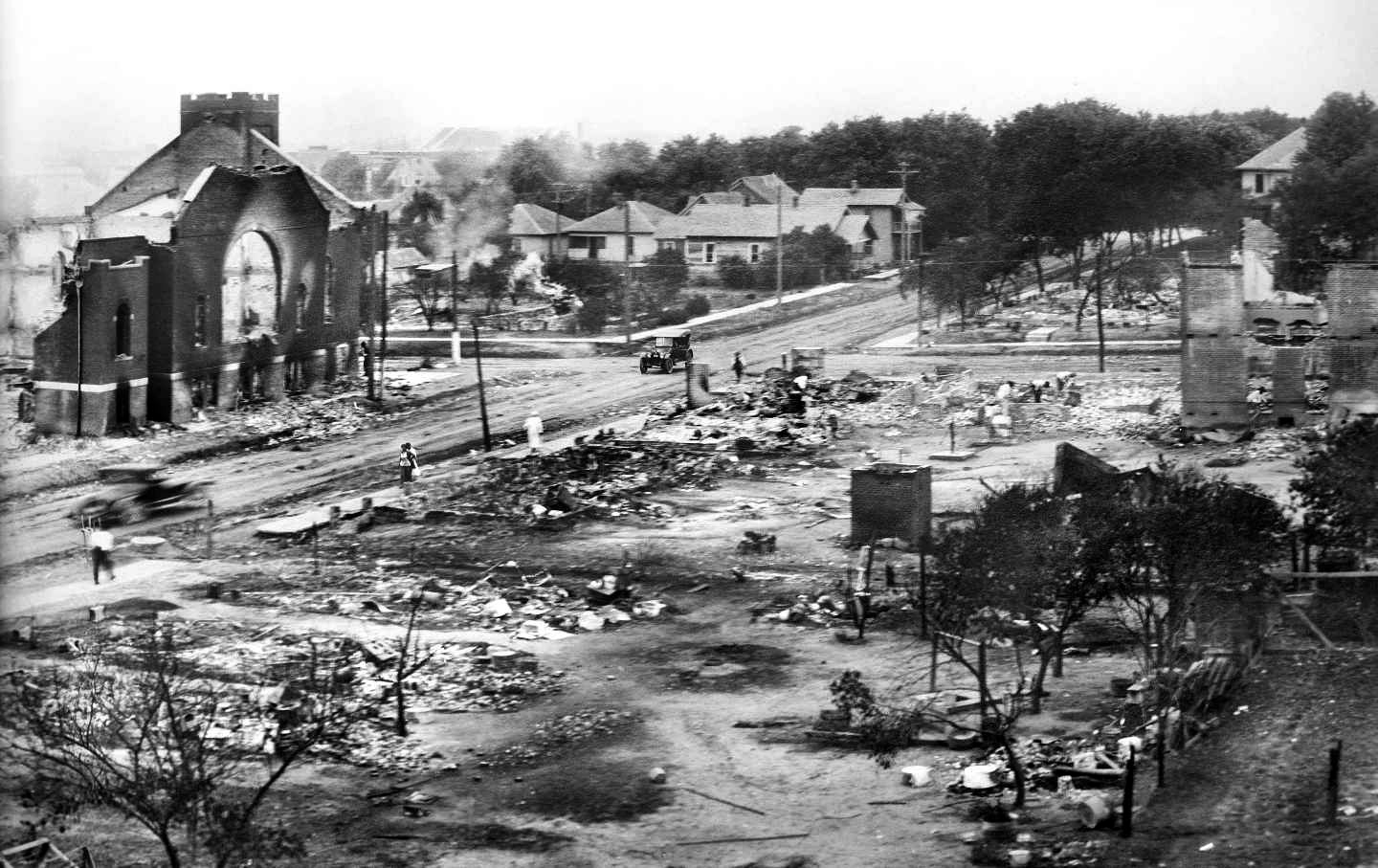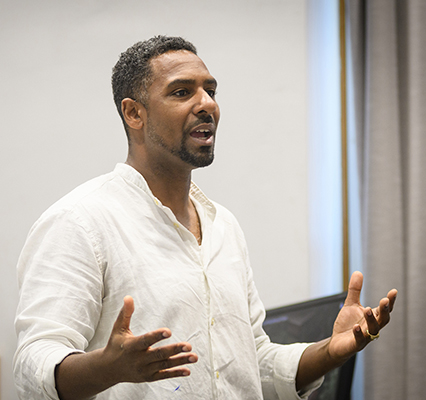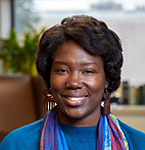‘This is American history’: Clark honors Juneteenth with discussion of 1921 race massacre

Hours after President Joe Biden signed a bill making Juneteenth a federal holiday, Clark University held a virtual event to commemorate the day’s significance.
On June 19, 1865, the Union Army landed in Galveston, Texas, and announced that the Civil War had ended and that all enslaved people were free. The first Juneteenth was celebrated a year later in Texas, and today is recognized across the country to mark this important milestone. It is also an opportunity to reflect on the need to continue working toward racial justice.
To mark the occasion, the Office of Diversity and Inclusion and the Africana Studies program hosted “‘This Was Not a Riot’: History, Memory and the Bombing of Black Wall Street.” Introduced by Esther Jones, associate provost and dean of the faculty, the webinar included a screening of “Blood on Black Wall Street,” a documentary about the 1921 Tulsa Race Massacre, followed by a conversation led by Ousmane Power-Greene, associate professor of history at Clark, and Dr. Kalenda Eaton, a professor in The Clara Luper Department of African and African American Studies at the University of Oklahoma.

Before the film, Eaton explained that the Greenwood District of Tulsa, Oklahoma, was thriving at the start of the 1920s. Its Black residents were professional and upwardly mobile; entrepreneurship was common. They reinvested their wealth into the community, which Booker T. Washington christened “Black Wall Street.” The city was segregated, but there was no history of racial violence.
That changed between May 31 and June 1, 1921, when a white mob killed hundreds of Black residents and destroyed over 35 residential and commercial blocks as well as more than 1,200 businesses, devastating the thriving business hub and impacting generations of Black Tulsans. The massacre exposed the reality that the wealthy, self-sufficient Black Americans posed a threat to the white population, particularly the poor, Eaton said.
The connection between the Tulsa massacre and Juneteenth is important, Eaton added, as its legacy contains a larger message about America. The North Tulsa community, past and present, is “a microcosm of the larger Black experience in America.” The massacre and its aftermath, she said, involve aspects of race relations, Black migration, Black upward mobility, Black military service, the Ku Klux Klan, white supremacy, reparations, and generational trauma.
“Blood on Black Wall Street” features interviews with community leaders, activists, and descendants of survivors, as well as recorded first-person accounts of the massacre.
“This is not Black history; this is American history,” Jones said. “This is history that we need to all know, learn, and understand.”
“We’re in a moment of national reconciliation around racial violence, which for too long has gone unacknowledged by the majority of people,” Power-Greene said.

After the screening, Eaton discussed the grassroots efforts within the Tulsa community to rebuild and bring investments back into the Greenwood District. Businessowners, even those who had insurance, were forced to file lawsuits that lasted into the 1930s, and most claims were denied. The fight has continued into 2021, especially regarding the need for reparations, she added. “The bottom line is that something has always needed to happen, and definitely needs to happen now. I don’t see how the city of Tulsa can move forward” without reckoning with the massacre’s lingering aftermath.
Power-Greene noted that Tulsa’s “urban renewal” initiatives of the 1950s to 1970s included constructing a highway that divided the Greenwood District and forced many of its Black residents to move to less desirable parts of the city. More recently, regularly increasing rent costs have resulted in business closures, such as a salon owned by a descendent of a massacre survivor.
“It’s hard to wrap our heads around ‘urban renewal,’” he said. Decisions, which are made under the guise of “helping” a community, have an intentional impact on certain residents and neighborhoods.
Eaton agreed, noting that many so-called urban renewal initiatives are in fact forms of systemic racism. For example, the same kind of highway that cuts through the Greenwood District can be found in any number of major cities. “Those are calculated and pervasive,” she said. “And we can’t think about what it means to salvage communities without thinking about the means by which they were destroyed.”
While the Tulsa massacre was widely reported on at the time, it largely disappeared from the national consciousness over the succeeding decades. Even children and grandchildren of survivors often weren’t aware of the events, which were largely preserved in oral histories.
“Blood on Black Wall Street” features the son of a massacre survivor who is dedicated to retelling this dark chapter in Tulsa’s history. Eaton said she was struck by the documentary’s emphasis on handing over the information to the next generation.
“Do the work,” Eaton stressed. “It’s not hard — the information is there. We won’t move forward if we’re not having those conversations, even if they’re uncomfortable. These histories aren’t even that long ago, and they’re relevant to where we are now and where we will be in the future. I’m very encouraged by the current generation, my students, who are pushing and asking questions that move us past awareness and recognition into action.”
Power-Greene urged people to “move away from the idea that someday, everybody will suddenly agree. The idea that, as a nation, we will embrace Critical Race Theory, or reject Critical Race Theory, or embrace or reject Juneteenth as a holiday — it won’t happen.” He also urged caution against expending too much energy disagreeing with people who are not interested in learning and understanding. “I’m much more interested in people who join conversations like this and want to listen and learn.”
“Bring your knowledge with you to where you are,” he added. “Keep thinking about it, and keep engaging.”


